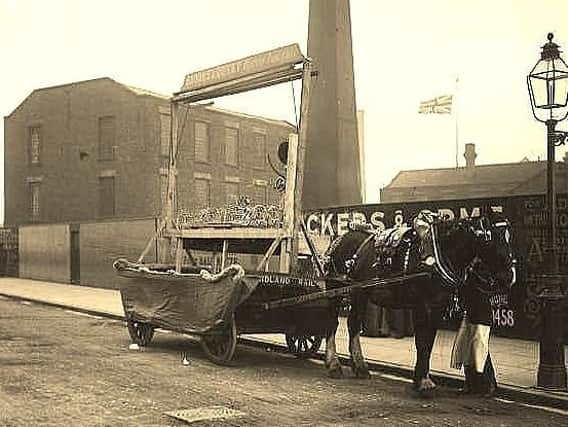Lead flashing thief from Preston resuced after getting stuck in hole


Whilst on his way home through Southgate on the second Wednesday evening of December 1866 William McDuff of Robert Street in Preston heard some moaning cries. Wondering what was amiss he clambered onto a wall at the back of the Broomfield Mill alongside a weaving shed.
After shouting out that he was there to give assistance he spotted a man up to his breast in a bog hole. The clearly exhausted and distraught man pleaded for help to be rescued from his plight. Along with a couple of others who were passing Mc Duff succeeded in getting the man out of the bog hole. Mc Duff then offered to help the man to his home in Haydock Street, but his assistance was declined.
Advertisement
Hide AdAdvertisement
Hide AdA week later William Mc Duff appeared at the Preston police court before the Mayor Edmund Birley as a key witness when Francis Lambert, a painter by trade, living in Haydock Street stood accused of stealing a quantity of lead flashing from the roof of a weaving shed alongside Richard Threlfall’s Bloomfield Mill.
Also called to testify was George Brocklebank, a joiner employed at the mill. He stated that on the day after the incident he discovered that 15ft of lead flashing had been taken off the weaving shed roof and that later he discovered a length of flashing in the bog hole from where the accused had been rescued.
Police Sergeant Swift told the court he had charged Lambert with the theft on the Thursday afternoon and that he had responded by claiming that a boy had thrown his cap over the wall, and he had gone to look for it and fallen in the bog hole.
It was then mentioned that the prisoner had worked at the mill at one time and when quizzed by the magistrates he insisted that he had simply tumbled down and had no intention of stealing lead.
Advertisement
Hide AdAdvertisement
Hide AdHe was then informed that he would be sent for trial at the Epiphany Quarter Sessions in early January 1866.
Once again Lambert, aged 46, pleaded not guilty and his trial took place before a common jury. Besides the evidence submitted at the earlier hearing it was also claimed that a ladder found close to the roof from where the lead had been stolen actually belonged to the accused painter.
George Brocklebank confirming that it was not the property of the mill. Once again Lambert insisted that he had been on the premises to retrieve his cap and knew nothing about the lead flashing or the ladder.
The jury after just a short deliberation returned a guilty verdict and the chairman Mr. T. B. Addison having little sympathy for a thief who failed to admit his crime ordered him to be sent to gaol for six months with hard labour.
Advertisement
Hide AdAdvertisement
Hide AdRichard Threlfall had much more to worry about than a lead thief in late January 1871 when his five storey mill was engulfed by flames. The mill where 500 employees had toiled was completely destroyed and the cost of blaze was reckoned to be over £30,000. Fortunately, the Preston Fire Brigade managed to stop the flames spreading to the neighbouring mill buildings.
Comment Guidelines
National World encourages reader discussion on our stories. User feedback, insights and back-and-forth exchanges add a rich layer of context to reporting. Please review our Community Guidelines before commenting.